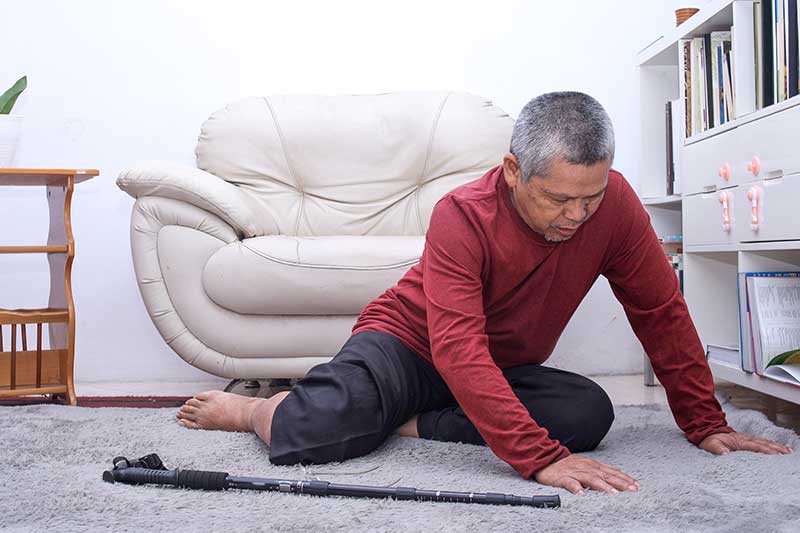Aging is a normal part of life, and as we age, our bodies endure a variety of changes that can make us more susceptible to falls. For seniors, mishaps can have serious consequences, often leading to injuries, hospitalization, and a decline in overall quality of life. Consequently, injury prevention becomes a top priority in senior care. In this exhaustive guide, we will examine the critical importance of fall prevention for seniors and provide an in-depth examination of practical tips and strategies to help them remain safe and independent.
Importance of Falls Prevention
Senior falls are not an isolated problem; they pose a significant public health risk. Consider the following statistics from the Centers for Disease Control and Prevention (CDC) to place this into perspective:
- Each year, millions of older individuals are treated for injuries resulting from falls.
- Seniors’ falls are the primary cause of fatal and nonfatal injuries.
- Falls frequently cause fractures, cranial injuries, and hip fractures.
The emotional and psychological toll of falls should not be underestimated, despite the obviousness of the physical injuries. Seniors who have fallen frequently develop a dread of falling again, resulting in decreased mobility, social isolation, and a lowered sense of well-being. This dread can lead to a vicious cycle in which reduced physical activity and social interaction exacerbate the risk of falling.
The good news is that many falls can be prevented through proactive measures, changes in lifestyle, and the creation of a safe environment. Let’s examine some tips and techniques that can substantially reduce the risk of falls among senior citizens.
Practical Advice for Preventing Falls
- Regular exercise that improves strength, balance, and flexibility can significantly reduce the likelihood of falling. Tai chi, yoga, and water aerobics are terrific options for senior citizens. Not only do these exercises enhance physical abilities, but they also boost confidence.
- Some medications can cause vertigo, lightheadedness, or equilibrium problems. Seniors should evaluate their medications with their healthcare provider on a regular basis to ensure that they are not taking unnecessary risks. Adjustments or modifications to medication can help mitigate these dangers.
- Vision Exam: Routine eye examinations are necessary to detect and treat vision issues, which can contribute to falls. Poor vision can make navigating obstacles and detecting dangers difficult.
- Modifications for Home Safety: Make the necessary changes to the home environment to reduce fall risks. This may involve installing handrails along staircases and in bathrooms, installing grab bars in the shower or next to the toilet, and removing trip hazards such as loose rugs and extension cables.
- Seniors should wear supportive, well-fitting shoes with non-slip soles both inside and outside the residence. Proper footwear increases stability and decreases the possibility of stumbling or tripping.
- Dehydration and malnutrition can impair the body and increase the risk of falling. Seniors should consume a nutritious, well-balanced diet and remain adequately hydrated.
- Schedule a visit with your healthcare provider. This includes the management of chronic diseases such as diabetes, osteoporosis, and arthritis.
- Assistive Devices: If necessary, consider using canes or walkers as assistive devices. Ensure that these devices are fitted and maintained properly so that they can provide optimal support and stability.
- Prepare an emergency response plan in the event of a mishap. This may entail the use of a medical alert system that enables seniors to summon assistance in an emergency. Alternatively, maintain constant access to a phone.
- Encourage Open Communication: Encourage seniors to communicate openly with their caregivers, family members, or healthcare providers about any falls-related concerns or near-misses. This data can assist in identifying potential risk factors and implementing preventative measures.
The conclusion
Preventing injuries among seniors is not just a matter of safety; it is essential to their independence and well-being as a whole. By implementing the practical tips and strategies indicated in this guide, we can significantly reduce the risk of falls and create a safer environment for seniors. However, it is essential to recognize that seniors and their caregivers share responsibility for preventing falls. Together, we can ensure that our senior citizens are secure, self-assured, and flourishing in their golden years.
